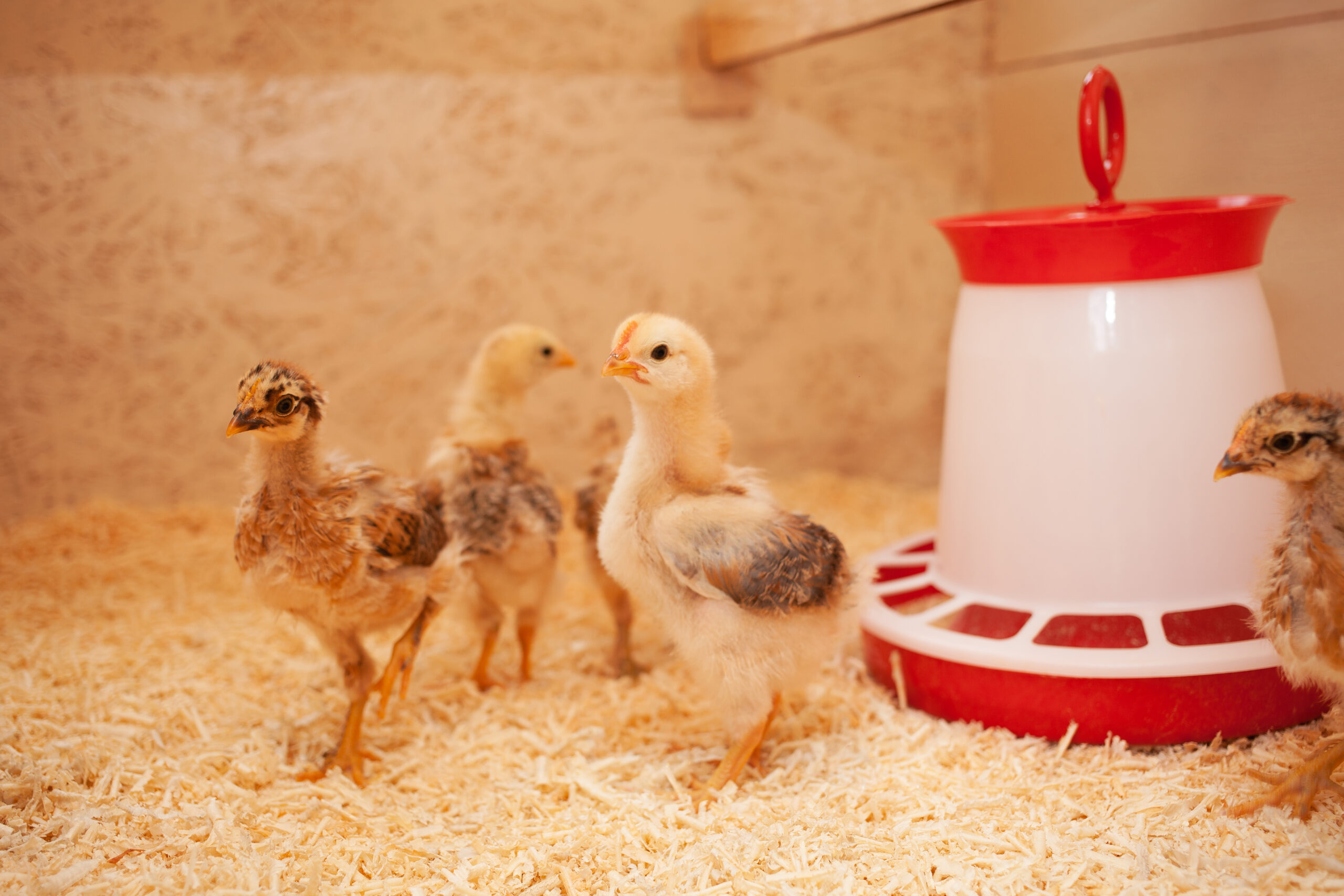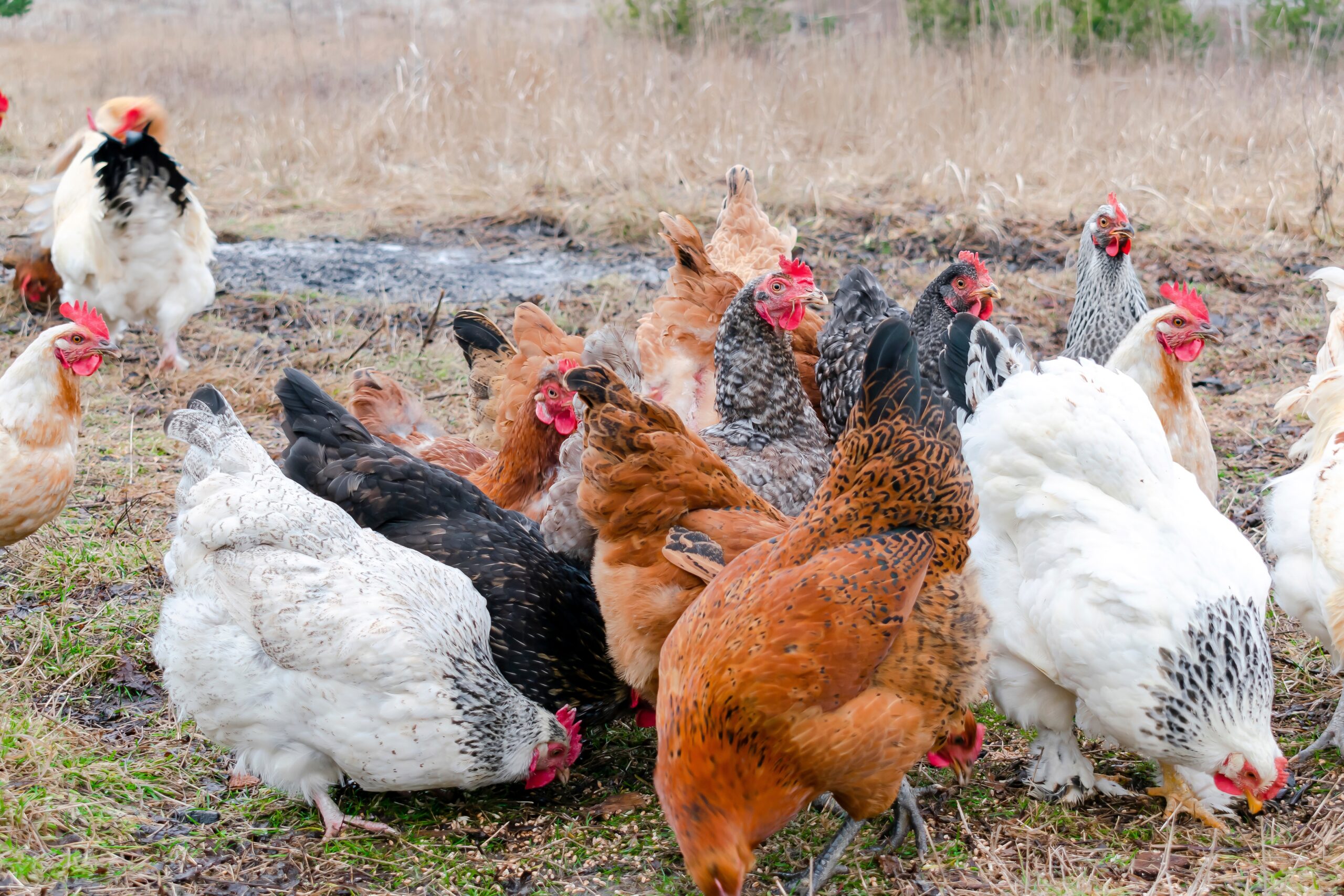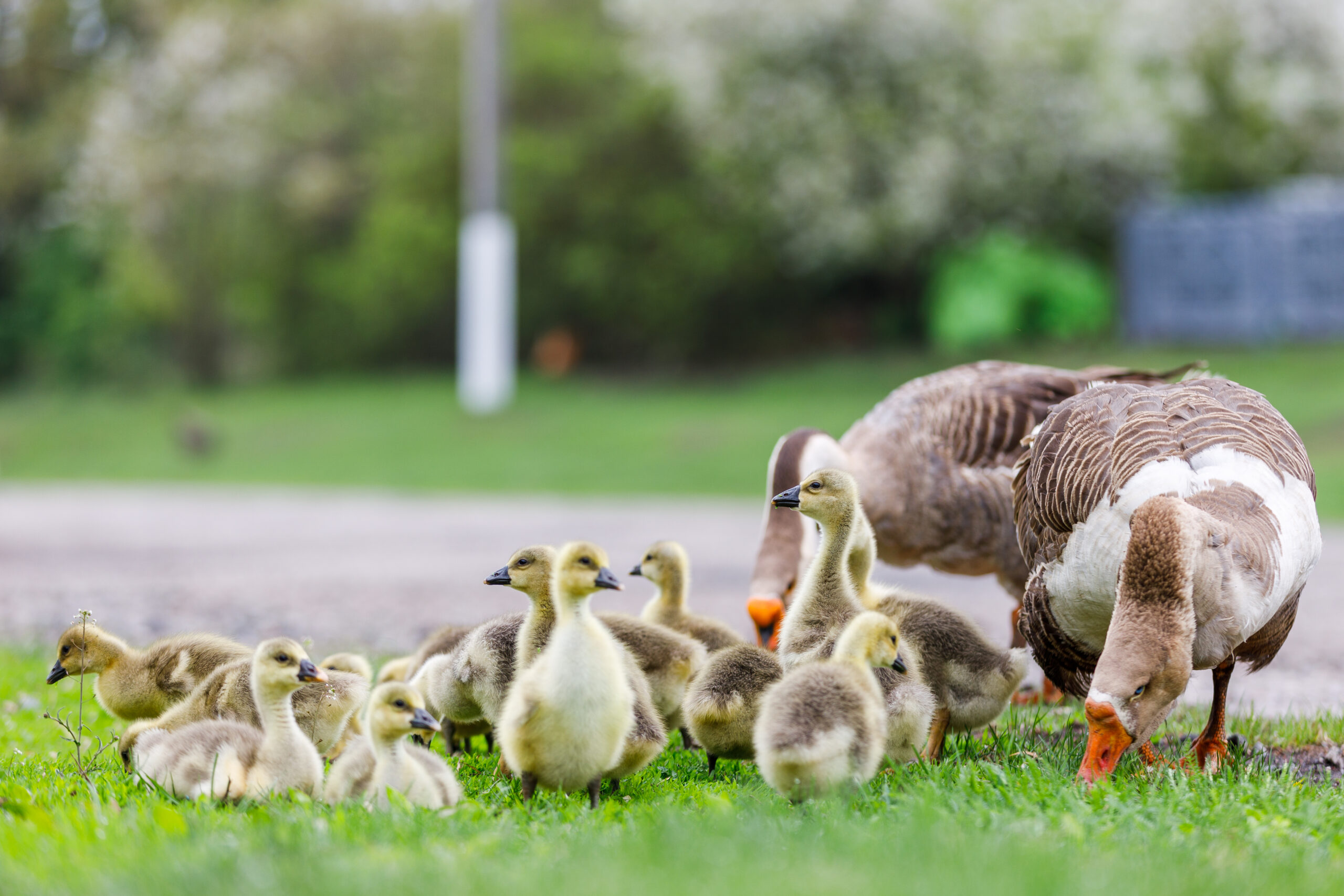poultry care
CARE OF DAY OLD POULTRY
Clean quarters. The environment should be draft and rodent free.
This is extremely important!!!
ARRIVAL DATE
first day instructions:
- Be sure you have some flexible time to pick up your birds from the post office and be home the first day and night to watch them. Sometimes they do not arrive when expected.
- Be sure to have your brooder area set up and heating source tested so that the birds can go straight into the brooder as soon as they arrive.
- Refrain from handling or playing with the birds the first 24 hours.
We recommend for the first day to have the drinking water at 98 degrees (or very warm) because the birds are small with little weight to them on arrival. They will drink a lot of water, which if too cool, can rapidly decrease their body temperature and put them into shock or make them sick.
- Take each chick, one at a time, and with your fingers hold the chick’s head and do a quick dip of the chick’s beak into the water and then let go of the chick.
- You can add 1 teaspoon of sugar to 1 quart of very warm (98 degree) water and shake well. Use this mixture for the first 4 hours and then change back to regular very warm water.
This is extremely important!!!
HEATING INSTRUCTIONS:
Always use brand new bulbs. We have found that using a drop light with reflector shield is a good source of heat.
- Use a 75, 100, or 150 watt bulb.
- A guide is one brooder lamp per 25 chicks.
- The bottom of the bulb should start out about 18 inches above the floor. Hang a reflector light from something secure to insure that it idoes not fall and hurt the birds or burn anything. The wattage of the bulb you are using will factor in how high or low you hang it.
- Make sure to use a thermometer at floor level under the light to be accurate.
- Again, make sure there is plenty of room for the chicks to walk away from the heat source.
From days 3 through 7, the temperature in the brooder should be 95°F at floor level. Then you will reduce it 5 degrees per week until the temperature reaches 70°-75°F.
exception!
- The temperature may need to be slightly higher for Bantams and other small, bodied birds. Whereas the temperature may need to be slightly lower for Jumbo Cornish Cross as they grow faster than others and will overheat more quickly.
- You can lower or raise the reflector to obtain desired temperature, or you can change the wattage of the bulb. Temperature is very important; therefore, a thermometer is highly recommended. Regular white bulbs are fine; however, red bulbs may work better to reduce feather picking.
- After two weeks, it is best to provide a heat source other than by light bulbs, such as an infrared hanging heater. It is better because the constant bright light from bulbs can stress the birds and cause health issues and picking. You will have to watch the birds for piling up during this transition.
This is extremely important!!!
FEED
first day instructions:
- Use a chick starter/grower feed.
- Sprinkle feed on the paper towel. The chicks find the feed easier in this way at the start.
Do this for the first day. Then put the feed in troughs low enough so that the chicks can see and reach it easily. Use one foot of trough feeder or one round feeder for every 25 chicks. Never let the chicks run out of feed.
Adding crumbled boiled egg yolk on top of the feed gets the chicks off to a good start and encourages them to start eating feed right away. It is important to remove all uneaten boiled eggs after 2-4 hours. We do not recommend adding grit because the chick starter/grower feed is formulated for what the chicks need to digest the food. Chicks should stay on a full feed ration of chick starter/grower until they lay their first egg.
exception!
- You should limit feed intake on the Jumbo Cornish Cross starting at the 14th day by taking the feed away at night. This seems to help slow the growth of the bird just enough to allow the skeletal structure of the bird to catch up with their fast muscular development.
- Start with a 1-gallon low profile chick waterer for each group of 25-50 chicks. Do not medicate water with anything on the first day.
- The first water given to newly arrived chicks should be very warm at 98°F. The next 2 days the water should be warm and by the 3rd day it can be room temperature.
- Your chicks will be thirsty when they arrive in the mail. A taste of water right away will help them find more water soon. Dip the beak of each chick into the warm water before you turn your chicks loose.
- Most baby chick loss is caused by the chick not starting to eat or drink due to them being too cold to move. Never let your chicks run out of water.
This is extremely important!!!
SPECIAL SITUATIONS AFTER THE CHICKS ARRIVE
if the chicks had a hard trip:
INSTEAD OF USING THE STANDARD FEED AND WATER SUGGESTIONS LISTED ABOVE, TRY THIS:
- Put 1 teaspoon of sugar in 1 quart of 100°F water and shake well.
- Add a little of this water mixture to a small amount of feed, stir and sprinkle it around the chicks.
- Mix only right before you are ready to put it in the feed. Do a small amount at a time.
AS THEY EAT IT, MIX SOME MORE AND SPRINKLE IT AROUND THEM TO GET THEIR ATTENTION. NEVER LEAVE THIS MIXTURE FOR MORE THAN A COUPLE OF HOURS; IT WILL SOUR AND CAUSE ILLNESS.
PASTY BUTT: “PASTING UP”:
When you are raising baby chicks from their early stages of development, your chicks could develop something called “pasty butt.” Sometimes the stress of shipping causes the manure to stick to the back of the chick. It is important to remove this daily. Pull off gently using a warm washcloth. It will disappear in a day or so as the chick starts to grow.
How to Prevent Pasty Butt?
Chickens have one hole that is used for laying eggs, pooping, urinating and mating. This hole is called the cloacal vent. A chick’s mother hen keeps her chicks’ cloacal vents clear, but if you are raising the chicks yourself, the vent can become clogged, and you end up “pasty butt.” I have read that this can happen during shipping – some say from temperature changes, some say from stress. A chick can actually die from pasty butt because it cannot poop until the pasty butt is cleared. The result: you need to clean your chicks’ bottoms. Use a warm washcloth and move it slowly on the chicks’ bottoms. You can use a Q-tip and olive oil or mineral oil to rub around the vent and surrounding area.
How to Clean Pasty Butt?
Unfortunately, it can be a bit of a problem to clean pasty butt in baby chickens. Some people actually run the pasty butts under warm water to help dissolve the poo. Make sure your room is well heated. Dry the chicks off before putting them with the other chicks so their bottoms do not draw attention. You may end up plucking some of the pasty goop, irritating the skin, which then may cause other chicks to peck at it.
Check your chicks’ bottoms daily for the first few days to look for buildup, because this is the only way I know how to prevent pasty butt!
MEDICATION:
You should always have Amprol medication on hand when raising baby chicks. Do not give them medication unless there is an obvious reason to do so. Also, never give medication right away upon arrival. The chicks are too thirsty and can easily overmedicate themselves. If they appear weak, droopy, have diarrhea, or continue to have pasty bottom, then you can give them medication (only after the first 8 hours and never mix it with the sugar water or any other meds).
We recommend the use of Amprol for medication of these symptoms. You should be able to find it at your local feed store.
SPACE:
- Try to provide ½ square foot per chick at the start.
For starting 50 chicks, use a draft shield and make a circle about 5 to 6 feet across. For 100 chicks, make a circle 7 to 8 feet across
This is extremely important!
CHICK BEHAVIOR BEST INDICATOR OF COMFORTABLE TEMPERATURE
LITTER:
Large pine shavings make a good litter. Rice hulls, dry straw, or hay can also make good bedding. Do not use small shavings or sawdust because baby chicks that are learning to eat will eat it and possibly die. Do not use sand because it can also be eaten by the birds and can cause their craw to have impaction, which may cause health problems and/or death.
Put the litter all over the floor at least 1 to 2 inches thick. On concrete floors, use 3-5 inches of bedding. Do not use cedar or cypress shavings as they are highly toxic to poultry.
PICKING:
It is very common for birds to use their own beak to groom or pick themselves. The oil gland above the tail provides oil for their beak to groom their feathers. New feathers are full of blood and if pulled out will bleed some and this can attract other birds to pick at this area.
Baby chicks will often pick each other if they are too hot, too crowded, without fresh air, and even when they are bored. Occasionally, bright lights can cause them to pick and having lights on 24 hours a day can cause stress; changing to a red light will help.
An ounce of prevention is worth a pound of cure when it comes to picking. When the birds are picking for no apparent reason, you can put fresh green grass clippings in several times a day and darken the room. Chunks of grass sod can also be set out for them to pick at. As a last resort, try cutting off about one-third of the top beak with a very sharp knife or box knife. Cut from top to bottom; straight down. Be careful not to crush the beak by pushing too hard on the knife. Do not cut the lower beak.
To treat chicks that have been picked, smear some type of menthol ointment on the area that has been injured and keep up the treatment until healed
SPACE:
- Try to provide ½ square foot per chick at the start.
For starting 50 chicks, use a draft shield and make a circle about 5 to 6 feet across. For 100 chicks, make a circle 7 to 8 feet across
AFTER 4 WEEKS
LITTER:
- Increase floor area to 3-4 square feet per bird.
- Increase feeders to provide 2 ½ to 3 inches of space per bird.
- Increase waterers to one 5-gallon fount per 100 chicks or install a nipple system.
- Install roosts at back of brooder area. Start roost poles low and gradually raise from floor.
- Allow 4 inches width per bird and 6 inches apart.
- Open windows during the day. Leave only partly open at night.
- Prevent water puddles around founts.
- Place founts on low wire platform. Move founts periodically to new locations to keep area dry so you can prevent bacteria from forming.
- Birds can range outside on warm, sunny days but only if a clean range is available.
BEWARE OF PREDATORS!
BABY TURKEYS
Use the basic instructions above but watch more carefully as turkeys tend to chill quicker than chicks. Baby turkeys are known to be somewhat dumb; therefore, you have to make sure they know where the feed is.
It is helpful to put colored marbles in the water founts and to sprinkle some feed on paper towels for the first few days. If they do not get started eating and drinking properly, you might have “starve outs.” If the turkeys show any sign of diarrhea, add a sulfa type of drug (Sulmet, etc.) to their drinking water as directed on the package. DO NOT use any slick paper for bedding for turkeys. They can easily slide on slick surfaces (they lack the muscle in the leg area that keep their legs from spreading apart) which can result in spraddle-legged poults.
We also recommend a few standard size baby chicks to be raised with the turkeys in the beginning. The chicks will teach the turkeys how to eat and drink.
DUCKS & GOSLINGS
Follow the same care as for baby chicks, except ducks and goslings do not need the extra heat as long as baby chicks because of their rapid rate of growth. They will require more care in that they are messier with water founts.
WARNING: DO NOT MEDICATE WATER FOR DUCKS OR GEESE!
The ducks and geese should be raised separately from the chicks and turkeys.
Make sure the water fount and base are sturdy as you do not want it knocked over into the litter. In extreme shipping situations, water may need to be restricted for a short time upon arrival. Never offer food without water. Ducks and geese can be turned outside at an earlier age than other birds depending on the weather. Goslings love to eat grass and weeds and will begin grazing as soon as they are turned out.
DO NOT let baby ducks and goslings out on a pond as they will drown since they do not have a mother to help them. Their down absorbs water. Once they have feathered out (2-3 months depending on the breed) they can go on the pond. Ducks and geese can be raised together; however, do not raise them with any other chickens, turkeys or other birds. The ducks and geese are messier with water so they can cause your other birds to get sick and possibly die. Once they are grown, ducks and geese can free range with other birds as long as there is a big enough area.
QUAIL, PHEASANTS & GUINEAS
Use the basic instructions for chicks; however, watch them more carefully for pilling up. The temperature may need to be slightly higher for the smaller bodied birds. Usually 99°- 100°F for the first week, then lower it 5 degrees per week until about 70°F. The temperature must be closely monitored.
A thermometer is highly recommended. Special game bird water founts can be purchased. If you are using regular chick founts, add clean gravel or marbles to take up space so they do not drown or get chilled. You should use a colored bulb to help control cannibalism. We do not recommend wire flooring at a young age because it is a good possibility that their legs will get caught in the wire.
SAFE HANDLING OF POULTRY
Live animals and pets can be a source of potentially harmful microorganisms (germs including salmonella and bacteria). Therefore, precautions must be taken when handling and caring for them to prevent fecal/oral transmission among people. Children should be supervised as they handle animals and pets to make sure they do not put their hands or fingers in their mouth. Always wash your hands with soap and warm water after handling animals.
PLEASE NOTE: It’s very important to follow the care and brooding instructions to the letter to ensure chicks get a good start. We guarantee all poultry to arrive alive and in good condition. The Chick Hatchery will not be responsible for any losses due to neglect.












